
The Ultimate Gift-Giving Guide: How to Choose Gifts Like an Expert
Discover the strategy behind gift-giving and learn how to choose thoughtful, practical, and meaningful gifts
PVD jewelry is changing how we wear and enjoy accessories. Using physical vapor deposition, this high-tech coating makes jewelry more durable, vibrant, and waterproof. In this guide, we’ll explain how PVD works, why it outperforms traditional plating, and how it brings both beauty and long-lasting quality to your collection.
PVD jewelry refers to jewelry that undergoes surface treatment using PVD technology, which in turn gives the jewelry stronger surface performance and a more refined appearance. Because of these qualities, it is often also called waterproof jewelry.
Specifically, PVD, or Physical Vapor Deposition, is a high-tech process that takes place in a vacuum chamber. Solid metals—like titanium, gold, or zirconium—are vaporized and then deposited atom by atom onto the surface of an item. As a result, an ultra-thin coating (as little as 0.1 to 5 microns thick) forms that’s extremely durable, corrosion-resistant, and visually striking.
As early as 1857, Faraday’s experiment on vacuum metal evaporation revealed the embryonic form of PVD. However, with the development of theory and the improvement of practice, PVD technology has also been applied in various industries.
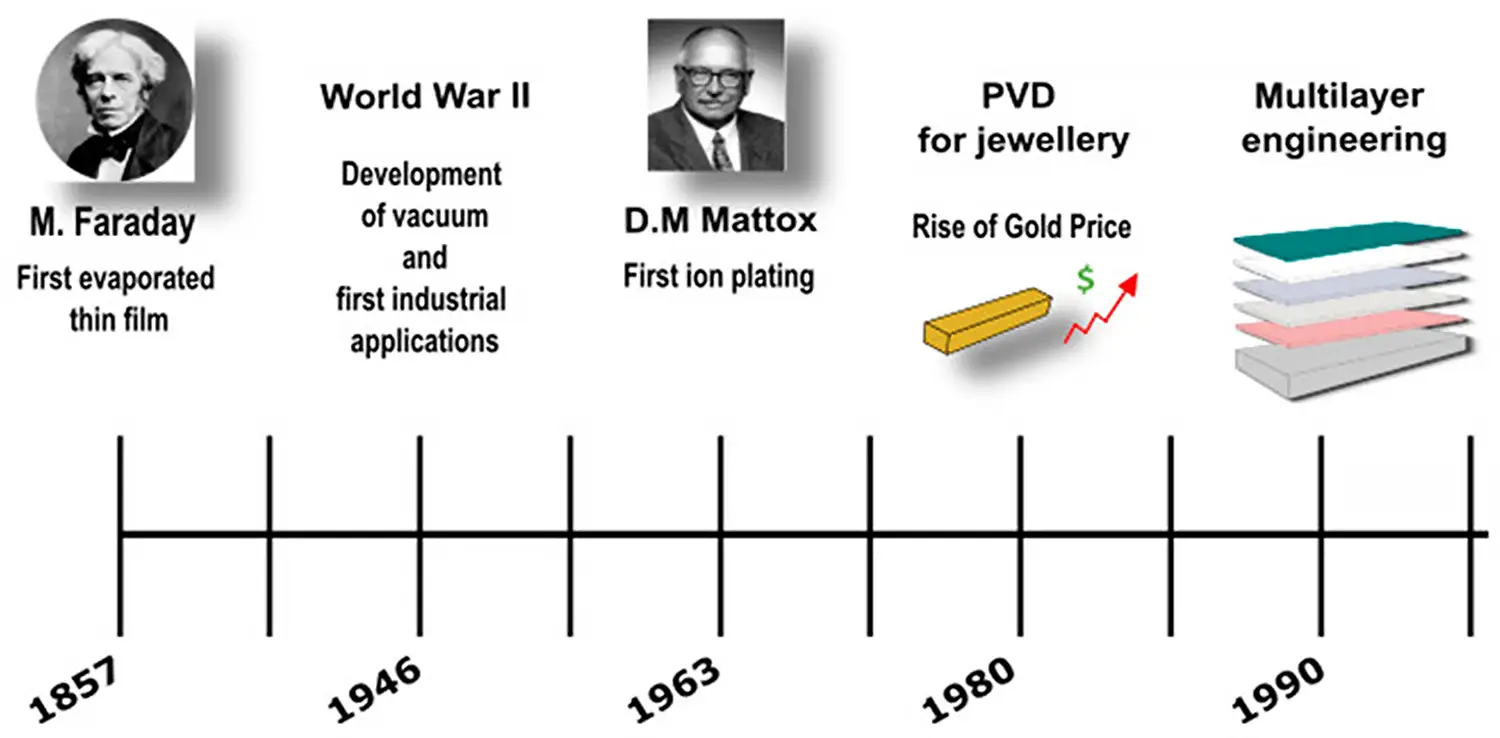
Surface Treatment
PVD makes surfaces harder, more resistant to wear, and longer-lasting by adding thin layers like titanium nitride (TiN), chromium nitride (CrN), or diamond-like carbon (DLC). Consequently, it is used in aerospace, cutting tools, and medical implants. In addition, the PVD coatings protect against corrosion from moisture and chemicals, which benefits parts used in the marine, automotive, and oil and gas industries.
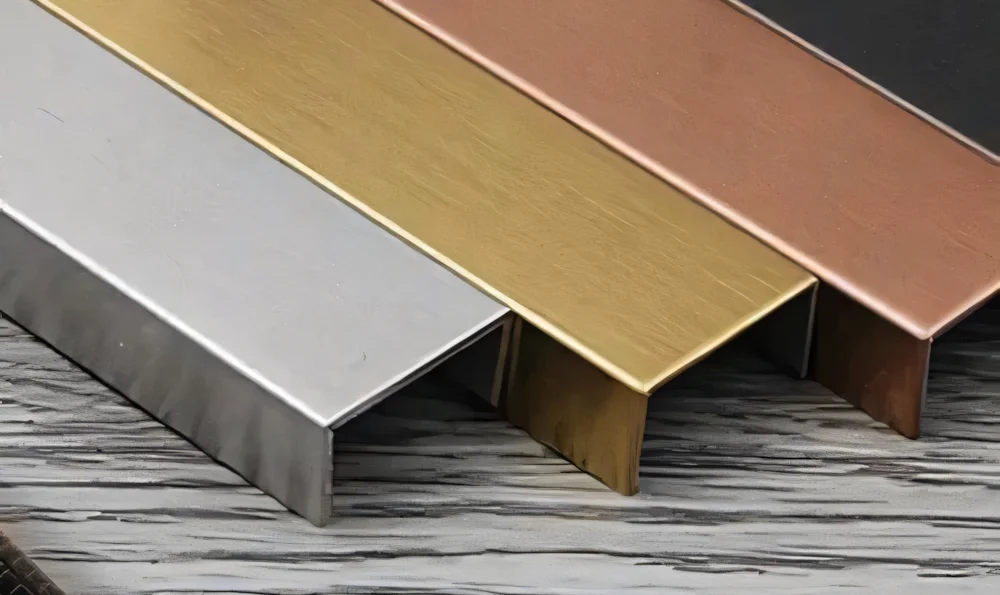
Thin Film Deposition
PVD deposits functional thin films onto substrates. For example, indium tin oxide (ITO) coatings are conductive and transparent, ideal for displays, solar cells, and touchscreens.
PVD also forms barrier layers that block moisture and gases, protecting packaged food, medicine, and sensitive products and extending shelf life.
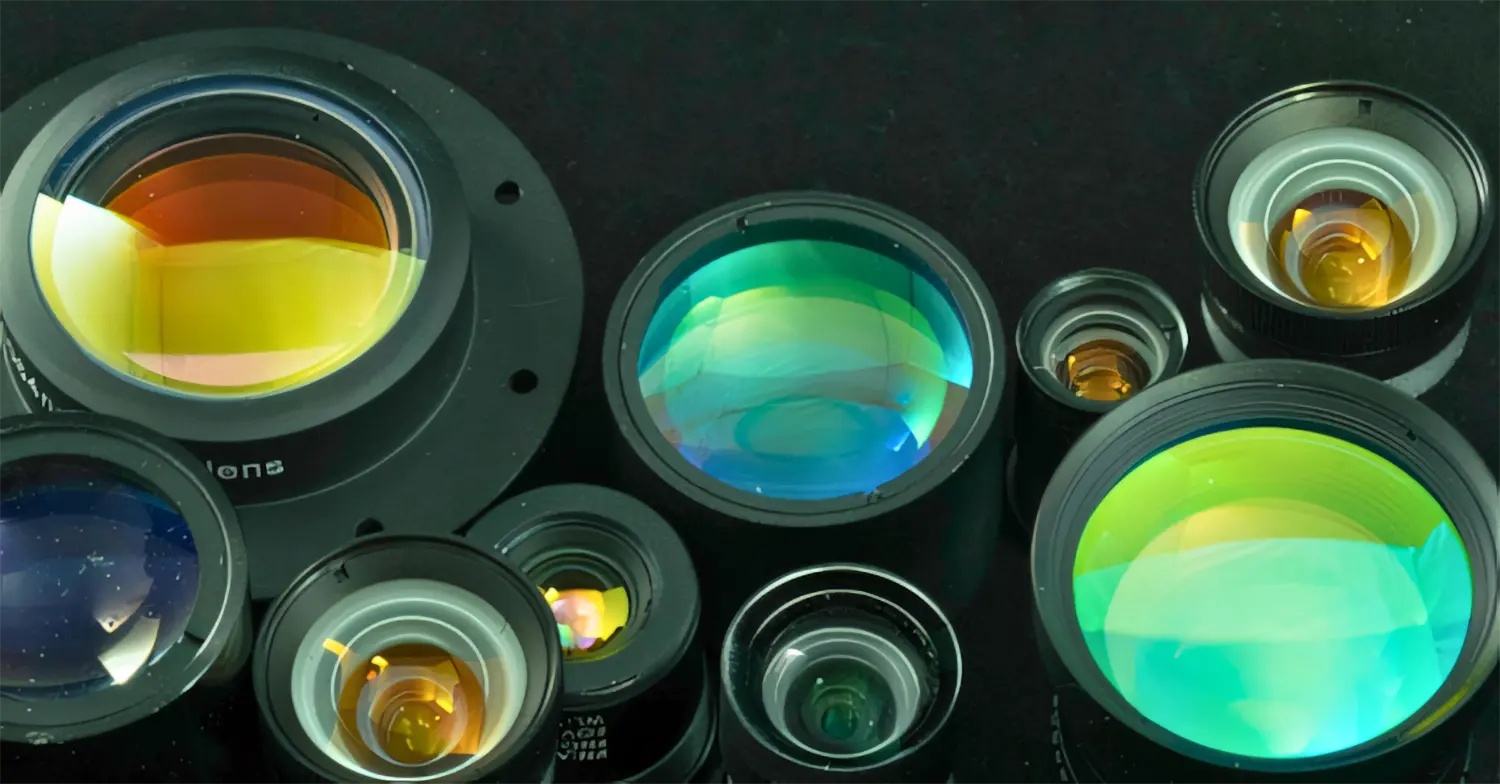
Aesthetic Applications
PVD allows metal films like gold, silver, or titanium to be applied on surfaces for custom finishes. Jewelry, watches, and electronics gain scratch-resistant, luxurious coatings.

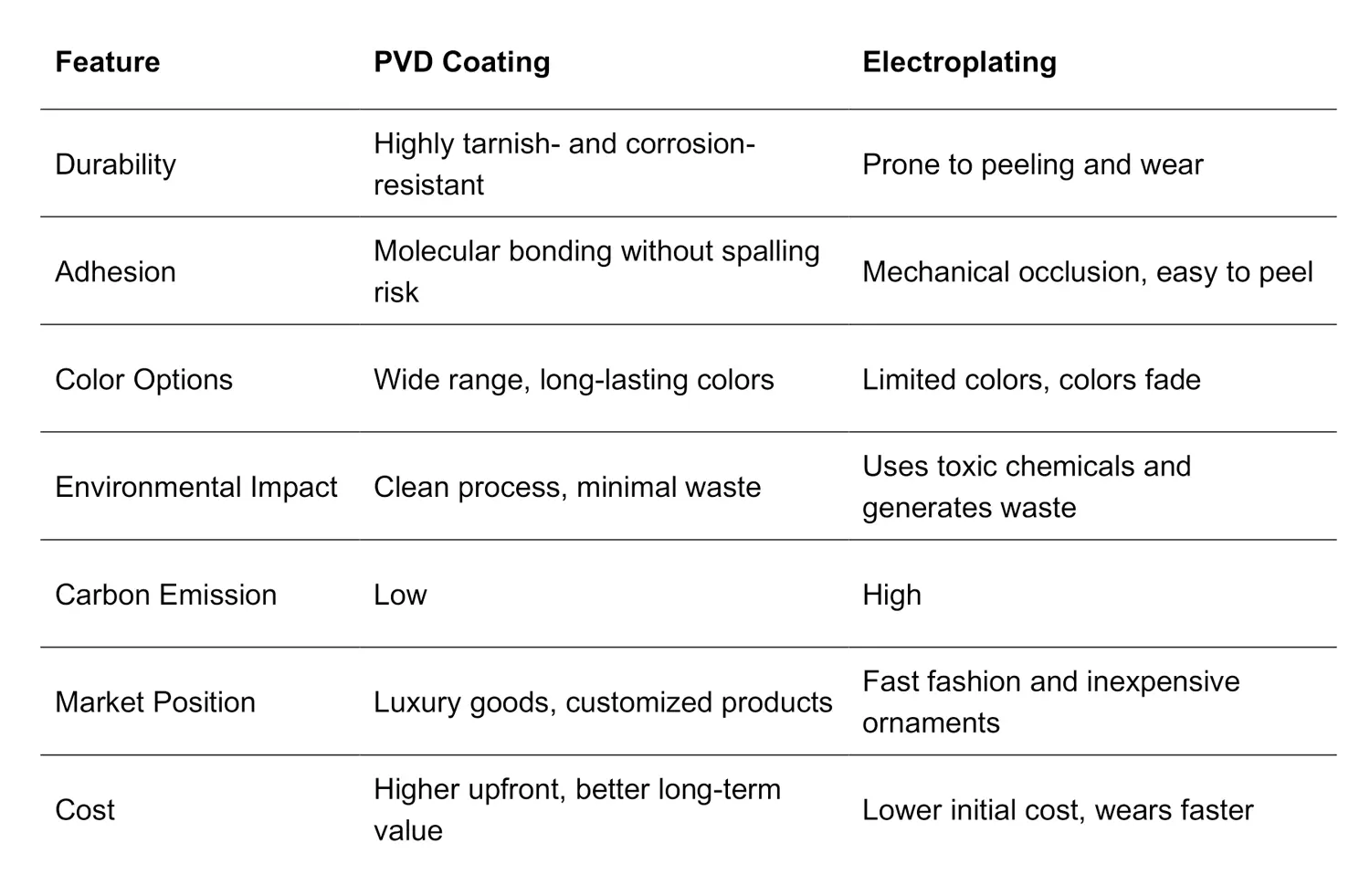
Electroplated coatings are typically thin and have low adhesion, so under friction or chemical erosion, they are likely to peel off. On the other hand, PVD coatings have better wear and corrosion resistance and stronger adhesion thanks to the application of physical vapor deposition techniques.
Electroplating technology requires the use of a large number of chemicals, and the resulting wastewater and waste gas pose a threat to the environment and the health of workers. For example, for every 1 kg of gold-plated ornaments, 50 liters of cyanide-containing wastewater and 3 kg of heavy metal sludge are needed.
In contrast, PVD technology doesn’t use harmful chemicals and creates very little wastewater. Moreover, 95% of argon is reused, and over 70% of the target material is utilized (compared to only 40% in electroplating). As a result, PVD cuts the overall carbon footprint by about 70% compared to electroplating. Therefore, PVD is a more environmentally friendly coating technology.
Electroplating technology typically limits the color range, making it susceptible to fading. PVD technology can provide a greater variety of color choices, and these colors are more lasting and can maintain the luster of jewelry for a long time.
Electroplating technology equipment is simple and cost-effective, making it suitable for mass production. PVD technology equipment is more complex and requires a higher initial investment, but due to the durability and environmental friendliness of its coatings, PVD technology has a higher cost-performance ratio in the long run.
This long-lasting jewelry usually has a service life of 2–4 years, depending on the wearer’s environment as well as the level of cleaning and maintenance. If your purchase store offers a warranty and meets the after-sales conditions, your jewelry can last even longer. Therefore, it is important to understand the relevant after-sales policies before buying.
The above is Domyee’s interpretation of PVD technology. As technology continues to evolve, the article will also be updated regularly. If you find it useful, feel free to bookmark and share it. If you have other questions, feel free to check the FAQ page for answers.
Subscribe to Domyee to continuously receive more intriguing industry knowledge and discount information.
Thank you for reading.

Discover the strategy behind gift-giving and learn how to choose thoughtful, practical, and meaningful gifts
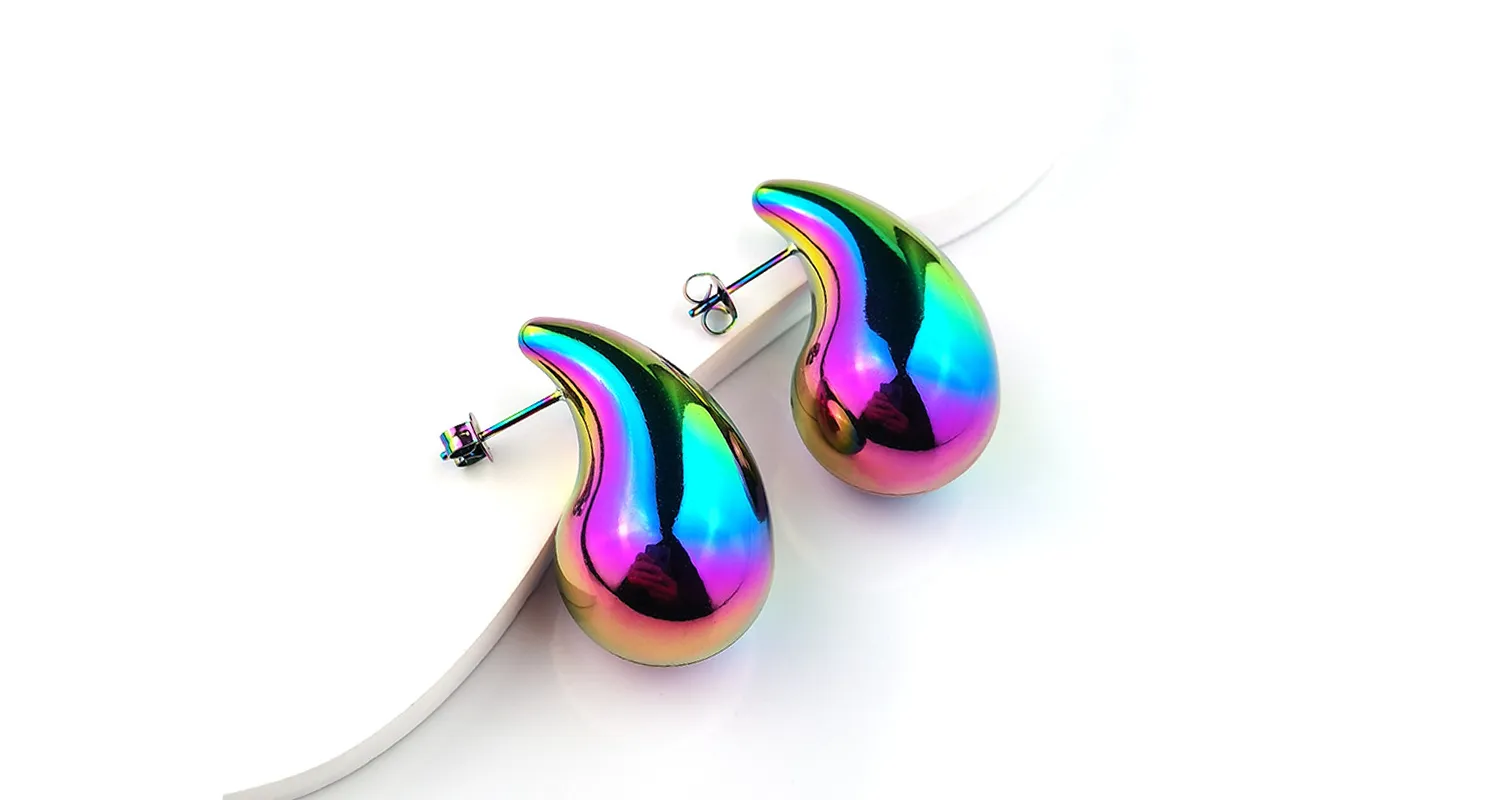
Discover how PVD jewelry offers durable, waterproof, and tarnish-resistant finishes that last longer than traditional

Discover how to choose and style jewelry by face shape, outfit, and occasion in this

This document provides common size selection references for rings and necklaces, helping you choose the
To better enjoy your shopping experience at Domyee, please review and agree to our Privacy Policy and Terms and Conditions.